Introduction
Embarking on the path to owning a business involves making an life changing choice. The success and benefits that come with it depend on an well thought out plan. It's crucial to grasp all aspects of a business. Its history, current financial status, market position and the complexities of interactions, with customers and suppliers.
Each of these elements provides perspectives that can help in making decisions and ensuring they are in line, with our long term objectives.
This extensive analysis goes beyond looking at financial numbers. It also covers aspects related to legal and regulatory adherence which is crucial for avoiding legal issues in the future. By delving into the environment thoroughly one can uncover areas for growth. Making informed decisions is key supported by thorough research and expert guidance. Equally crucial is weighing the purchase cost against financing options to strike a balance, between affordability and strategic value.
Incorporating the acquired company into current operations is key, to maximizing its benefits fully. By strategizing and comprehending the goals of the acquisition companies can smoothly transition and ensure long term success. This piece explores these aspects in depth providing guidance on how to navigate the intricate but fruitful journey of business mergers.
Understanding the Business's Background
Understanding the background of a business is essential when considering its purchase. It means looking into how it started achievements and how it has changed over time. For instance JP Morgan Chase can be traced back to 1799. Its history demonstrates how a detailed record can highlight an organization's commitment to long-term objectives and creativity. Over than two hundred years JP Morgan has stayed dedicated, to excellence and new ideas which have played a big part in its ongoing prosperity. Moreover, learning about events can help us understand what the organization excels at and where it requires improvement, providing us insight into any challenges that may impact its future performance. Michael Black, a partner at Richter stresses the importance of having a plan and strategy before making a deal. This involves making sure that the goals match up with the targets and conducting in depth research that goes beyond looking at the numbers to also consider how well the company's culture fits in. Taking this approach can be the difference, between a successful purchase and a lost opportunity.
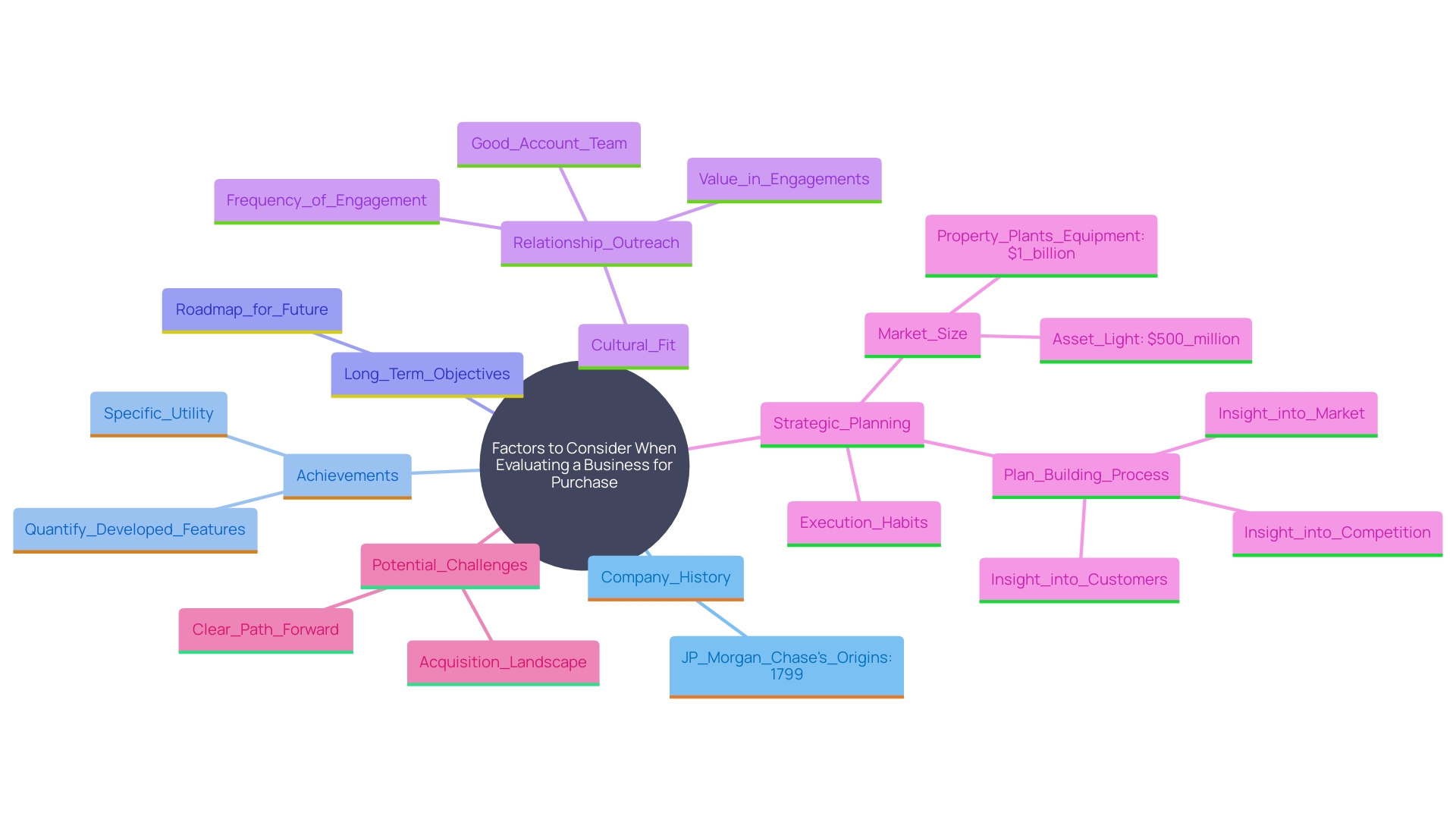
Financial Health and Valuation
To make an investment decision it is essential to conduct a thorough financial evaluation. This involves carefully reviewing financial records, profit margins, and trends in cash flow to assess the overall health of the enterprise. A financial expert is instrumental in this process as they examine balance sheets, income statements, and cash flow statements to determine profitability, liquidity, and financial stability. Utilizing data and statistical techniques alongside financial models assists in predicting future financial performance by estimating metrics such as sales figures and earnings while also considering expenses and revenue projections for upcoming periods. Furthermore important is understanding the valuation methodologies used and how they reflect the market conditions to assess if the suggested price is fair. Guaranteeing decisions are not solely based on data but are also strategically prudent.
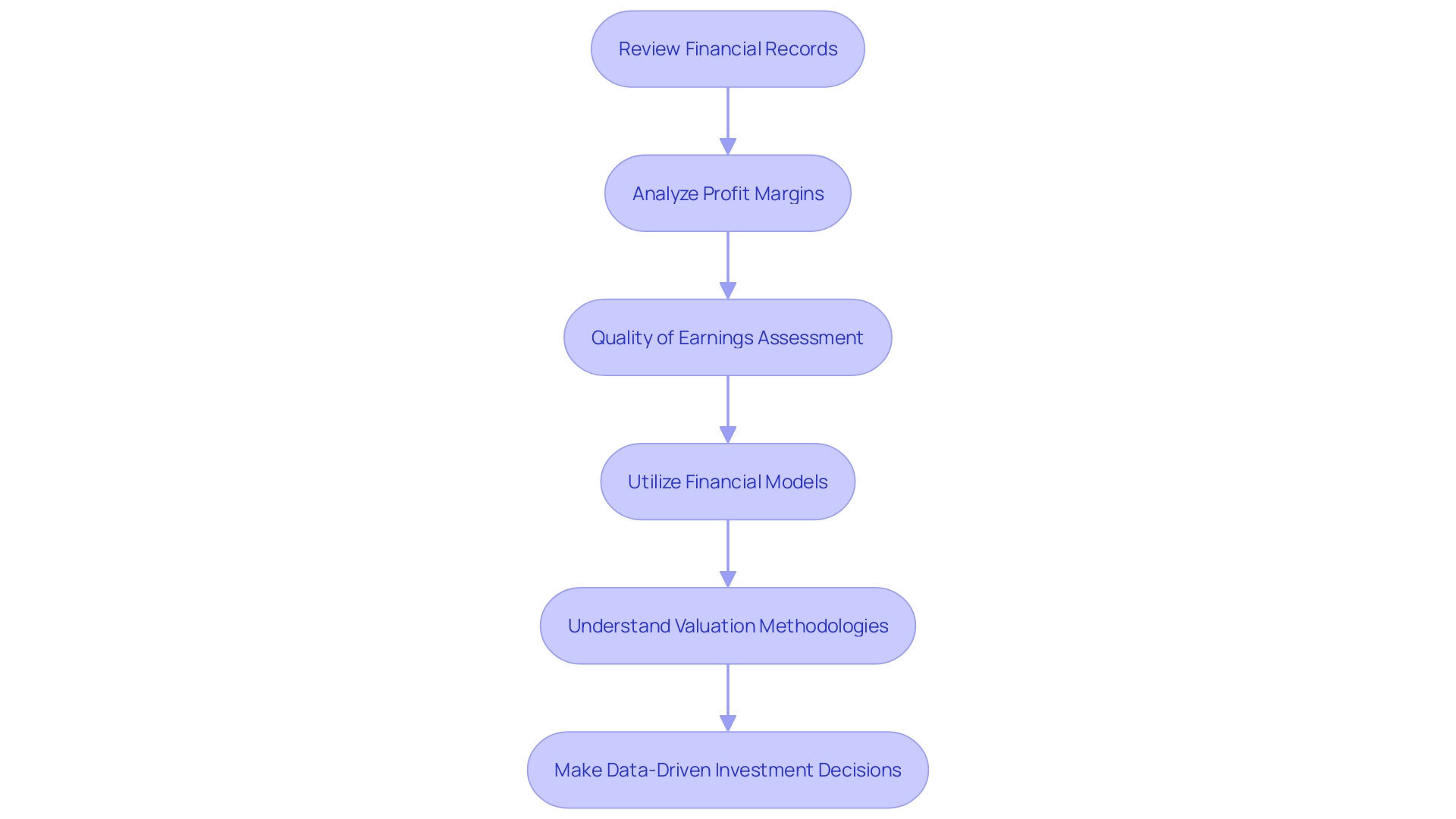
Customer and Supplier Relationships
Establishing connections with customers and suppliers is essential for achieving success, as it can significantly influence performance and growth trajectory. Developed relationships rely on trustworthiness, openness, and clear communication, which are critical components in nurturing enduring ties with stakeholders. Effectively managing supplier relationships can lead to benefits such as reduced costs and the sharing of valuable information. Working together with suppliers to exchange forecasts can streamline production processes by cutting expenses and improving operational efficiency. Assessing customer loyalty is important, as research has shown that devoted customers are likely to spend more, accelerate sales cycles, and ease cash flow issues. Data from scenarios supports this notion as dedicated patrons in the liquor industry experience a noteworthy decrease in unrecovered income in contrast to the field of construction. Thorough networks marked by consistency and ongoing progress amplify the company's opportunities, for expansion following a takeover.
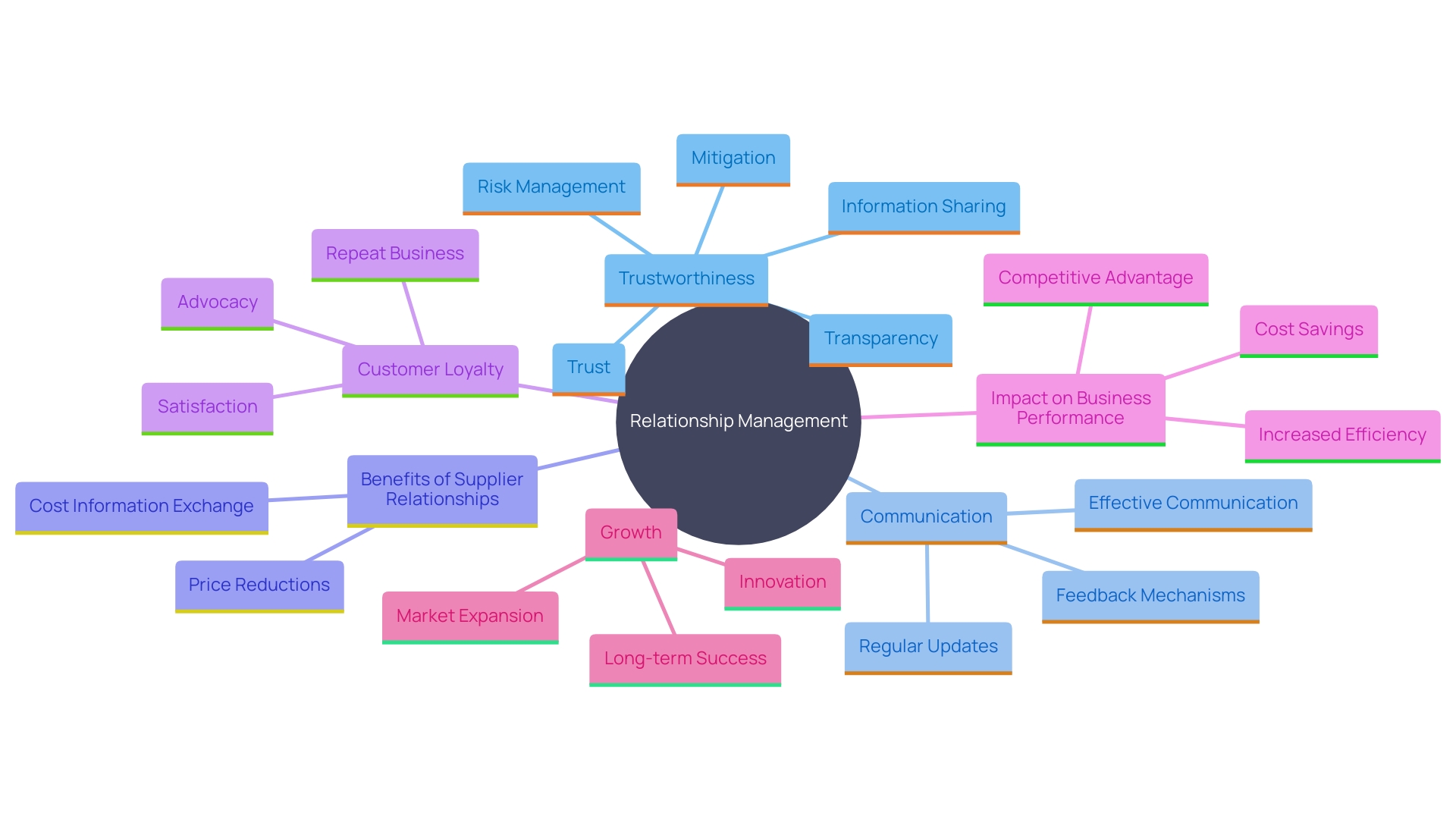
Legal and Regulatory Compliance
It's really important for your enterprise to follow all the rules and regulations to prevent any issues with the law. Start by checking all the licenses and permits you need as well as the specific regulations for your industry. Experts recommend that most companies must obtain some type of license or permit based on their activities and location. If you don't follow these rules properly it can result in consequences, like being forced to shut down.
Taking regulations into account is essential as they seek to minimize the detrimental impacts entities can have on the environment, including air quality and water resources. The Environmental Protection Agency (EPA) offers rules regarding various aspects like pollution control and waste management to ensure adherence to laws that vary across different levels of government. Adhering to these regulations is essential for some industries to avoid penalties and enforcement actions; however, grasping and complying with them can be difficult due to their complexity. The need to navigate through different sets of rules, at federal and local levels.
Additionally knowing about any concerns or ongoing legal disputes is vital to reduce risks.. In the realm of law cybersecurity emerges as a concern due to the confidentiality associated with the data being handled.. Legal practices are obliged to handle their cybersecurity to thwart breaches that might result in substantial harm to their reputation and erosion of client faith.. Adhering to privacy regulations such as those found in Canada which mandate the disclosure of security breaches is crucial, for upholding client trust and evading legal consequences..
By tackling these compliance concerns head on—you can make well informed choices that safeguard your business and foster sustained prosperity.
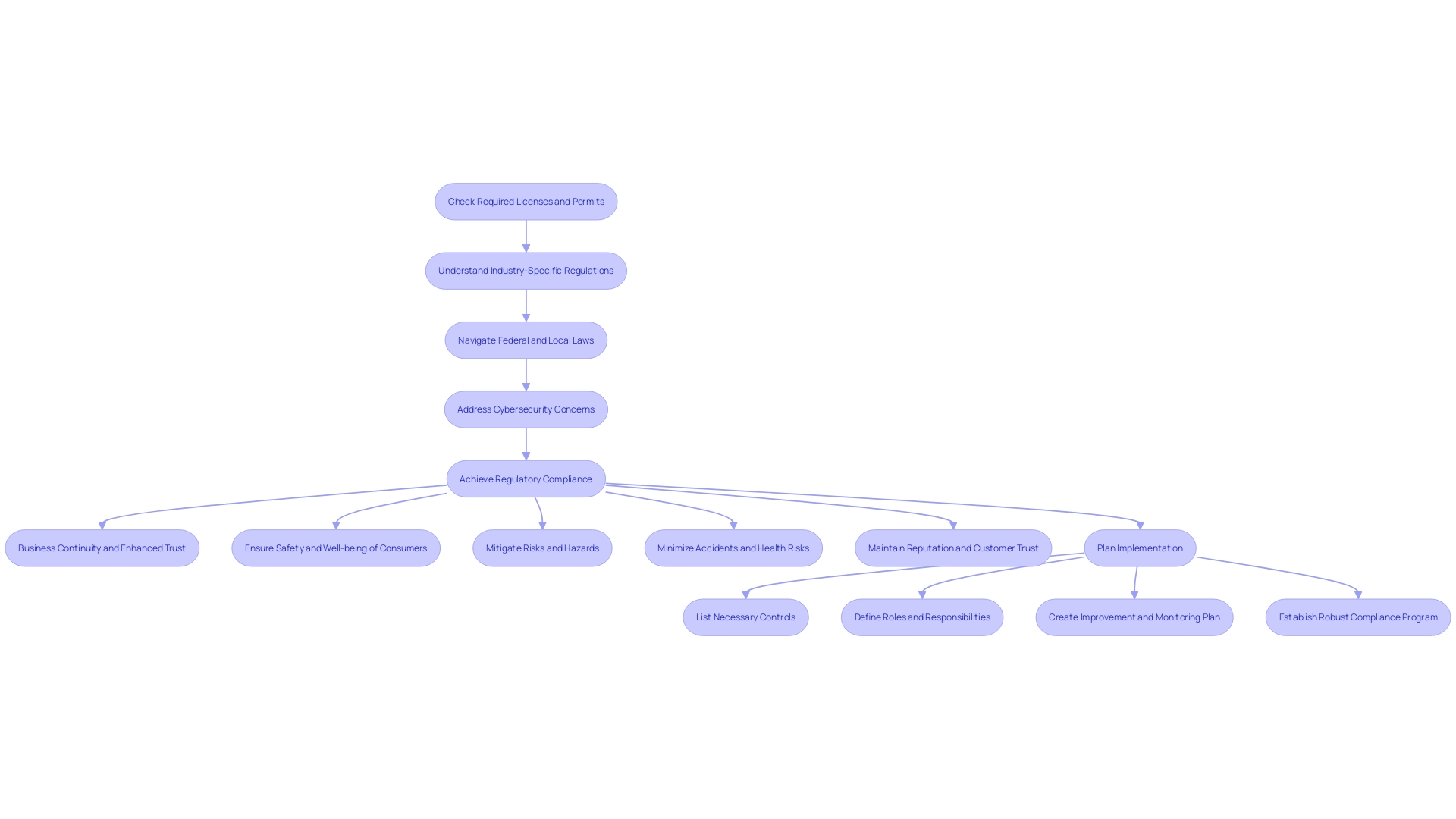
Market Position and Competitive Landscape
Evaluating where an organization stands in its industry is crucial for identifying growth opportunities and making informed decisions effectively. Concentrating on a competitive analysis that includes examining market share and key competitors enables prospective purchasers to assess an organization's potential for expansion and profit. This kind of analysis not only helps in understanding the organization's strong points and drawbacks but also uncovers ways to stand out and gain a competitive edge.
In todays evolving world influenced by major global trends like digitalization and decarbonization companies are always reassessing their strategies to maintain a competitive edge. Acquiring businesses could be a smart way to expand operations access innovative technologies and boost progress.. It's essential to approach mergers and takeovers carefully given that research suggests approximately 80% of such transactions end in failure. This significant rate of failure emphasizes the need for a strategic assessment of the organization's position within its industry.
Moreover, the ongoing economic situation influenced the assessment of firms being considered for acquisition due to the Federal Reserve's increase in interest rates. Consequently, negotiating prices between purchasers and vendors has become more challenging, particularly for firms with lower credit ratings and startups that are not profitable. 'Despite these obstacles, certain enterprises managed to adapt to the changing environment through concentrating on areas of growth and leveraging market research tools for useful information.'.
For example, platforms such as Yelp and the NFIB Economic Trends report can offer insights into customer preferences and market trends, enabling businesses to enhance their competitive strategies. By using these resources and conducting assessments, companies can improve their likelihood of making successful purchases and attaining steady growth in a competitive market.
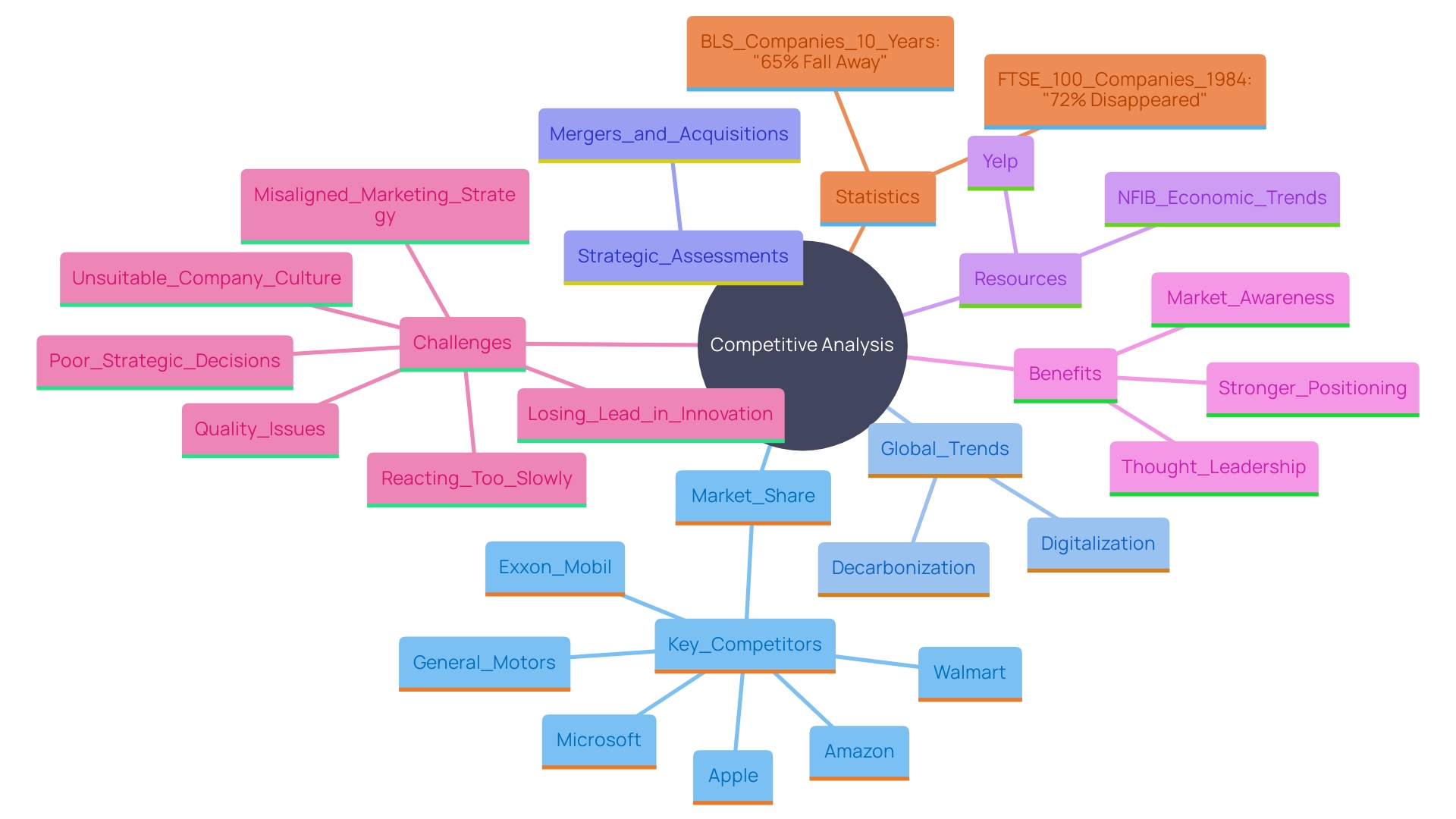
Due Diligence and Professional Advice
Diligently investigating a business is essential during a purchasing process where one reviews the financials and operations along with legal aspects involved in buying an enterprise. Michael Black, from Richter stresses the importance of grasping the objectives behind a merger or acquisition. Be it to expand operations scope to acquire new expertise and tap into fresh markets; such clarity helps keep everyone on track during the deal making journey.
An essential aspect of investigation involves assessing the Quality of Earnings (QOE). This process examines the stability and precision of an organization's well being to confirm the credibility of reported profits and pinpoint any possible threats to financial security. 'Highlighting a research study from 2004 suggests that organizations participating in evaluations of QOE tend to achieve better shareholder returns compared to those who are less proactive in their approach.
Professional assistance from individuals like accountants and brokers can offer expertise in transactions. They have the ability to identify issues that may not be obvious at first glance and help in navigating intricate deals. Christian Atzler from Baker McKenzie emphasizes the importance of maintaining transparency with parties, like joint venture partners and employees holding purchase rights to prevent any obstacles during the transaction process.
According to a report by Fiserv, small businesses have shown resilience in the face of economic difficulties, highlighting a robust market for acquisitions. This positive outlook highlights the significance of conducting due diligence in order to leverage emerging prospects and make well informed decisions.
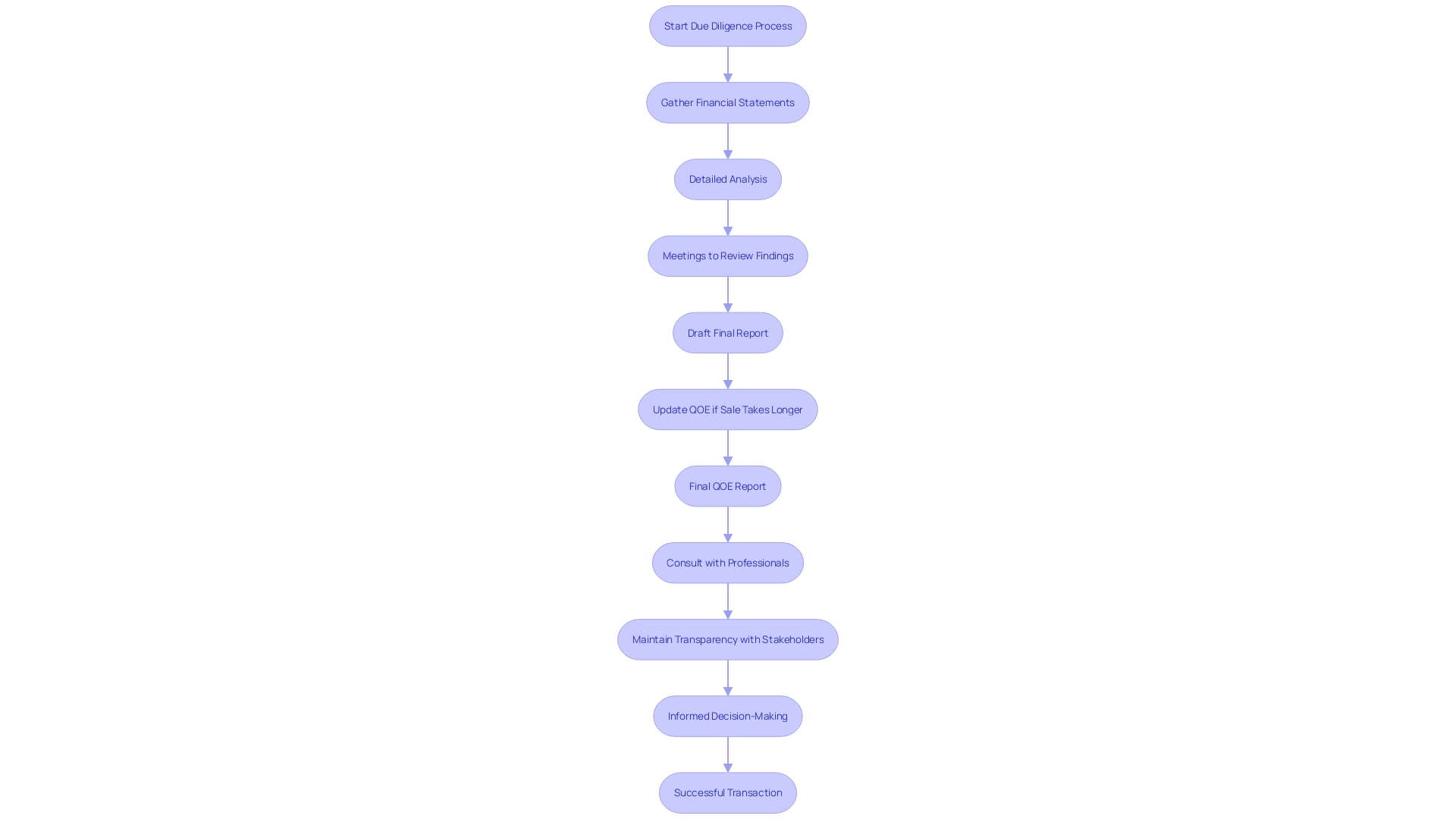
Purchase Price and Financing Options
It's important to figure out a price when buying something to ensure a smooth deal goes through smoothly.. Checking the Quality of Earnings (QoE) can give you insights into how reliable and accurate a company's financial results are and help you make smart choices.. It's also crucial to know about the ways you can finance your purchase. Like getting loans or opting for seller financing.. While conventional commercial loans provide rates, they might be difficult to obtain for very small enterprises. Conversely, private equity or venture capital can assist with purchases without necessitating prompt repayment, but this implies that investors will have an ownership interest in the venture.. Taking an approach to funding that takes into account interest rates and extra charges can lead to accessing improved investment prospects and sustained expansion over time. As small enterprises exhibit resilience in the face of changing circumstances an appropriate financing plan can help secure the essential funds, for future growth and stability.
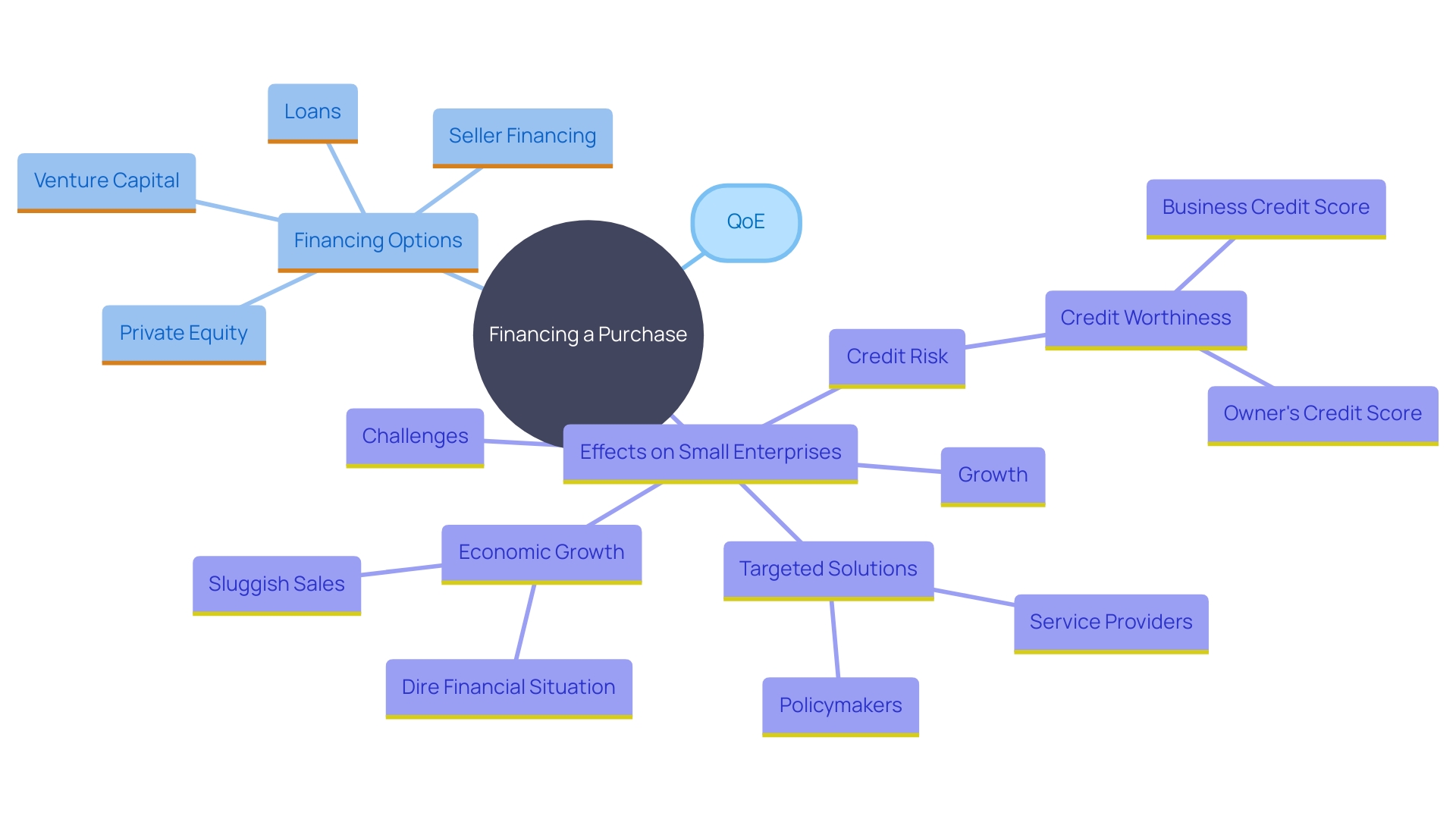
Post-Acquisition Plans and Integration
Developing a strategy for incorporating post-purchase is crucial to completely unleash your business's potential. It involves developing strategies for smoothly merging operations keeping valuable employees on board and nurturing relationships, with existing customers. According to Jason Turner, CEO of Venbrook Group, integrating purchases into your company's core focus is essential. Successful integration requires defining roles and appointing proactive leaders who can handle unpredictable situations ensuring a seamless transition and improved results.
One example is how Comwell Hotels realized the necessity for an update in their management system that had been operational for twenty years They managed to enhance customer satisfaction and gain acclaim in the industry by implementing innovative approaches This change showcases the significance of creativity and flexibility, in merging after an acquisition
It's important to grasp the motives driving mergers and acquisitions according to Michael Black from Richter’s insights; be it for increasing market presence or diversifying product offerings or tapping into markets; having a well thought out plan and approach before the deal is key. This requires due diligence not only on financial aspects but also, on cultural compatibility to guarantee harmony with your business objectives.
In the year 2024 nearly 22 383 deals were made totaling around $1 700 000 000 showcasing the need for thorough integration planning. The success of integration largely depends on having individuals, in vital positions clearly defined duties and a comprehensive understanding of leadership roles and responsibilities. This detailed preparation sets up the entity to surpass growth objectives and attain lasting prosperity.

Conclusion
Successfully navigating the process of acquiring a business demands a deep grasp of several crucial elements involved in the transaction journey. It all starts with delving into the background of the company to establish a solid groundwork, for making informed decisions. Examining the standing and valuation holds equal importance since it sheds light on the companys financial performance and stability – key factors that assist potential buyers in evaluating the reasonableness of the offered price.
Establishing connections with clients and vendors is crucial, for the prosperity of a merger or acquisition initiative. Fostering trust and transparency cultivates loyalty that can notably influence gains and expansion. Moreover comply with laws and regulations is essential to manage risks and steer clear of legal dilemmas that may put the companys future at risk.
Assessing the market position and competition helps in pinpointing growth prospects and strategic benefits for businesses looking to expand their operations with proper research and expert advice to guide them through the acquisition journey and make sure their investments are secure and in line, with their future objectives.
Ensuring an integration plan post acquisition is key to maximizing the potential of the newly acquired business entity! By prioritizing smooth operations maintenance and valuing both employee retention and customer relationships management betterment opportunities can be achieved by companies in the long run! Through planning and effective implementation navigating the path of business acquisition can pave the way, for substantial growth and exciting prospects turning obstacles into avenues towards a flourishing tomorrow.




